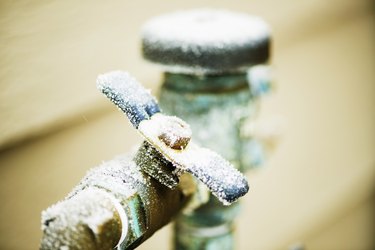The article author is making a few good pointers related to How to prepare your home plumbing for winter weather as a whole in this content in the next paragraphs.

Winter can wreak havoc on your plumbing, especially by freezing pipes. Here's just how to avoid it from happening and what to do if it does.
Introduction
As temperature levels decline, the risk of frozen pipelines boosts, potentially bring about pricey fixings and water damages. Recognizing how to prevent icy pipes is critical for homeowners in cool climates.
Comprehending Frozen Pipelines
What causes pipelines to freeze?
Pipes ice up when subjected to temperature levels listed below 32 ° F (0 ° C) for prolonged durations. As water inside the pipelines freezes, it broadens, putting pressure on the pipe wall surfaces and potentially creating them to break.
Dangers and damages
Icy pipes can bring about supply of water disruptions, residential property damages, and expensive repair work. Ruptured pipelines can flooding homes and create considerable structural damages.
Indicators of Frozen Pipes
Identifying frozen pipes early can stop them from breaking.
Just how to determine frozen pipes
Try to find reduced water circulation from faucets, unusual odors or sounds from pipes, and visible frost on subjected pipes.
Avoidance Tips
Insulating prone pipelines
Cover pipelines in insulation sleeves or make use of heat tape to secure them from freezing temperature levels. Concentrate on pipelines in unheated or exterior areas of the home.
Heating techniques
Maintain interior rooms adequately heated up, especially locations with pipes. Open up closet doors to allow warm air to distribute around pipelines under sinks.
Safeguarding Outdoor Plumbing
Garden tubes and outside taps
Detach and drain yard hose pipes prior to winter months. Set up frost-proof spigots or cover outside faucets with shielded caps.
What to Do If Your Pipes Freeze
Immediate activities to take
If you think icy pipes, keep faucets open up to relieve pressure as the ice thaws. Make use of a hairdryer or towels taken in warm water to thaw pipelines gradually.
Long-Term Solutions
Architectural modifications
Consider rerouting pipelines away from outside walls or unheated locations. Add extra insulation to attic rooms, cellars, and crawl spaces.
Upgrading insulation
Buy high-quality insulation for pipes, attics, and wall surfaces. Proper insulation assists maintain constant temperature levels and lowers the threat of icy pipes.
Verdict
Stopping icy pipelines needs proactive measures and quick responses. By understanding the reasons, indicators, and preventive measures, home owners can shield their pipes during winter.
5 Ways to Prevent Frozen Pipes
Drain Outdoor Faucets and Disconnect Hoses
First, close the shut-off valve that controls the flow of water in the pipe to your outdoor faucet. Then, head outside to disconnect and drain your hose and open the outdoor faucet to allow the water to completely drain out of the line. Turn off the faucet when done. Finally, head back to the shut-off valve and drain the remaining water inside the pipe into a bucket or container. Additionally, if you have a home irrigation system, you should consider hiring an expert to clear the system of water each year.
Insulate Pipes
One of the best and most cost-effective methods for preventing frozen water pipes is to wrap your pipes with insulation. This is especially important for areas in your home that aren’t exposed to heat, such as an attic. We suggest using foam sleeves, which can typically be found at your local hardware store.
Keep Heat Running at 65
Your pipes are located inside your walls, and the temperature there is much colder than the rest of the house. To prevent your pipes from freezing, The Insurance Information Institute suggests that you keep your home heated to at least 65 degrees, even when traveling. You may want to invest in smart devices that can keep an eye on the temperature in your home while you’re away.
Leave Water Dripping
Moving water — even a small trickle — can prevent ice from forming inside your pipes. When freezing temps are imminent, start a drip of water from all faucets that serve exposed pipes. Leaving a few faucets running will also help relieve pressure inside the pipes and help prevent a rupture if the water inside freezes.
Open Cupboard Doors
Warm your kitchen and bathroom pipes by opening cupboards and vanities. You should also leave your interior doors ajar to help warm air circulate evenly throughout your home.

I have been very curious about Preventing and dealing with frozen pipes and I'm hoping you enjoyed the entry. Sharing is nice. You never know, you may be doing someone a favor. Thanks for your time spent reading it.
Click Here